

Northern Iraq, Nimrud (ancient Kalhu), 9th c. BCE. Gypsum. H.: ca. 294 cm.
ANE 118805 (located in the Great Court of the Museum).
Learn more.

N. Iraq, possibly from Nimrud, ca. 2nd-1st c. BCE.
WAA 1603

Egypt, 6th c. CE.
MME 82.1-9.2

Egypt.
MME 1976.5-20.4

Late Antique/Byzantium, Asia Minor. 4th c. CE. Gold, pierced in manner known as opus iterrasile. 5.01 x 5.01 cm.; weight: 66.87 g.
MME AF 332
Learn more.
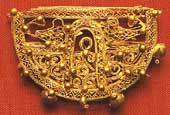
Byzantium.
MME AF 339


Byzantium. Gold.
MME 1986.6-1.1
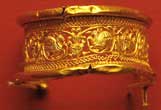
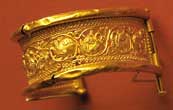

Byzantium. Gold.
MME AF 351


Byzantium. First half of 7th c. CE. Silver.
MME 1969.12-3.1
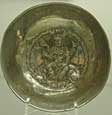

Khwarezm, 658 CE. Silver.
Inscription in the local Khwarezmian script dates it to just prior to the Arab conquest.
OA 1959.10-23.1
The black and white image is from I. I. Smirnov, Vostochnoe Serebro (St. Petersburg, 1909).
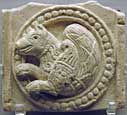
Northern Iran, Chal Tarkan, 7th-8th c. CE. Moulded stucco. 16.9 x 19.3 cm.
ME 1973.7-25.3 [135913]
Learn more.